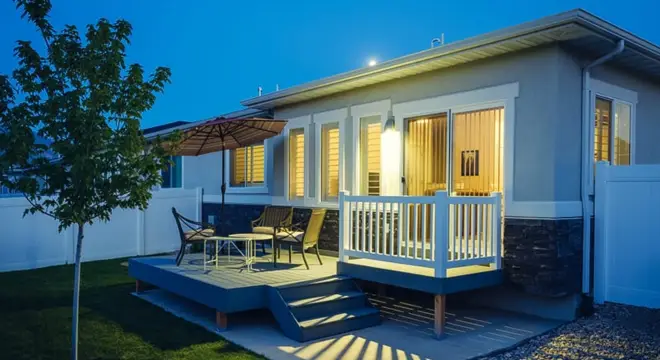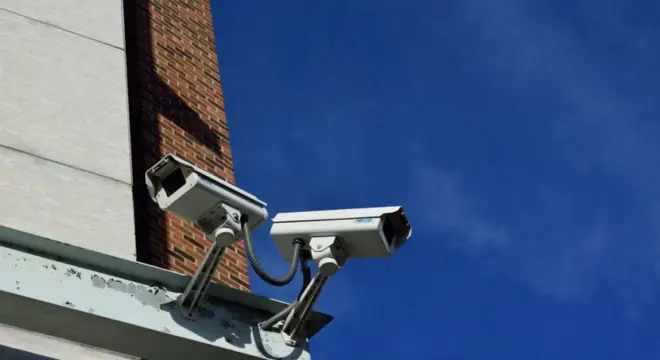Phrogging Prevention: Essential Tips to Safeguard Your Home from Unseen Intruders
Have you ever wondered, “What if someone is secretly living in my home without my knowledge?”
Or perhaps you’ve noticed small things out of place and thought, “Could it just be my imagination?”
These unsettling questions highlight a very real and growing phenomenon known as phrogging—a situation where intruders secretly occupy someone else’s home, often going unnoticed for days, weeks, or even months.
The idea may sound like the plot of a suspenseful movie, but for many homeowners, it’s a disturbing reality. Beyond the creep factor, phrogging poses serious risks to your privacy, safety, and peace of mind. Whether you’re a homeowner, renter, or landlord, understanding how to prevent phrogging is crucial to safeguarding your living space.

In this guide, we’ll dive deep into phrogging prevention tips—equipping you with actionable steps, expert insights, and real-life examples to ensure your home remains a safe haven.
Recognizing the Signs of Phrogging
Detecting phrogging can be challenging, but there are several telltale signs that can help you identify if someone might be secretly living in your home. If you notice anything unusual, pay close attention to the following:
1. Physical Indicators
(i). Moved or Missing Items:
- If items in your home are not where you left them or seem to be missing altogether, it could be a warning sign.
(ii). Unusual Noises:
- Strange sounds, like footsteps, furniture moving, or whispers, especially at night or from unused areas like the attic or basement, can indicate an intruder.
(iii). Strange Smells:
- Odd odors that you can’t identify could suggest that someone is hiding in your space.
2. Behavioral Changes in Pets or Family Members
(i). Pets Reacting to Unseen Presences:
- If your pets seem unusually alert, barking, growling, or staring at empty spaces, they may sense something you cannot.
(ii). Unexplained Feelings of Unease:
- If family members express feeling uncomfortable or have the sensation of being watched, don’t dismiss it—it could be a significant clue.
3. Unusual Utility Bills
(i). Spikes in Electricity or Water Usage:
- Unexpected increases in your electricity or water bills without a change in your household habits might mean someone else is using these resources.
Essential Phrogging Prevention Tips
Preventing phrogging requires a proactive approach to home security. Here are some highly effective tips to ensure your home remains safe and secure:
A. Strengthening Home Security
(i). Install High-Quality Smart Locks and Deadbolts:
- Upgrade to smart locks that allow remote control and monitoring of door access. Combine them with durable deadbolts for added protection.
(ii). Use Security Cameras with Remote Monitoring:
- Set up cameras in and around your home that let you monitor activity via a smartphone app, even when you’re away.
(iii). Secure All Entry Points:
- Regularly check and secure all windows, crawl spaces, attic entrances, and other potential entry points to prevent unauthorized access.
B. Advanced Detection Technologies
(i). Use Thermal Imaging Cameras:
- These devices can help detect hidden occupants by picking up unusual heat signatures in walls, attics, or basements.
(ii). Install Motion Sensors:
- Place motion detectors in less-used areas like basements or storage rooms to trigger alerts when unexpected movement occurs.
(iii). Leverage Home Automation Systems:
- Invest in smart home systems that integrate locks, cameras, and sensors for real-time updates and alerts about unusual activity.
C. Regular Home Inspections
(i). Check Unused Areas:
(ii). Schedule Professional Inspections:
- Hire experts to inspect hidden areas or spaces that are hard to access, ensuring every part of your home is secure.
D. Securing Architectural Weak Points
(i). Reinforce Doors and Windows in Less-Used Areas:
- Focus on securing entry points in basements, storage spaces, and backdoors with additional locks or stronger barriers.
(ii). Install Locks on Attic and Crawl Space Access Points:
- Ensure these vulnerable areas are sealed with heavy-duty locks to deter unauthorized entry.
Building Awareness and Community Involvement
Phrogging prevention is not just about securing your own home, but also about creating a collective sense of awareness in your community. Here’s how you can involve others and stay vigilant together:
A. Join or Establish a Neighborhood Watch Program
- Community Monitoring: Joining or starting a neighborhood watch program allows residents to keep an eye out for suspicious activity and share concerns quickly.
- Regular Meetings and Updates: Neighborhood watch programs often provide opportunities to discuss safety issues, recent incidents, and prevention strategies in regular meetings.
B. Use Apps like Nextdoor or Ring to Collaborate with Neighbors
- Nextdoor: This app allows local communities to communicate about safety concerns, suspicious behavior, or even lost pets. You can easily connect with your neighbors and share real-time updates.
- Ring App (or similar): Many homeowners use Ring doorbells and similar devices that offer video footage of any activity in front of your home. With these apps, you can receive notifications about movement or unusual activity on your block, helping to identify any potential threats early on.
C. Share Tips and Strategies Within Your Community
- Distribute Information: Share phrogging prevention tips in your neighborhood newsletters, on social media groups, or during local events.
- Collaborate on Home Security: Encourage neighbors to invest in similar home security systems and to watch out for each other’s homes when someone is away. Having a tight-knit, security-conscious community helps reduce the risk of phrogging for everyone.

What to Do If You Suspect Phrogging
If you suspect that someone may be secretly living in your home, it’s crucial to act carefully and strategically. Here’s what to do to handle the situation:
A. Immediate Actions to Take
- Do Not Confront the Suspected Phrogger Directly: It’s important not to engage or confront the suspected intruder. Phroggers may react unpredictably, and it’s safer to let law enforcement handle the situation.
- Call Local Law Enforcement Immediately: As soon as you have reasonable suspicion, contact your local police. They can investigate the situation, assess the evidence, and take the appropriate legal action to remove any intruders.
B. Preserving Evidence
- Document Signs of Intrusion: Before making any changes or cleaning up areas that may show signs of intrusion, document everything. Take photos or videos of any moved items, unusual marks, or other physical signs that suggest someone has been in your space without permission.
- Keep a Record of Events: Write down everything you’ve noticed—unusual noises, behaviors of pets, missing items, etc. This documentation can be valuable for law enforcement investigations, legal actions, and insurance claims.
- Secure Your Home After Reporting: Once you’ve called the authorities, make sure the home remains secure until help arrives. Lock all doors and windows, and avoid entering potentially dangerous areas until it’s safe to do so.
Legal and Insurance Considerations
Dealing with phrogging involves more than just securing your home—it’s also important to understand the legal and insurance implications. Here’s what you need to know:
A. Understand Trespassing Laws in Your Area
- Know Your Rights: Trespassing laws vary by location, but generally, it’s illegal for someone to enter and stay on your property without permission. Research the specific laws in your area regarding illegal entry and occupancy.
- Legal Consequences for Phroggers: In most places, phrogging is considered a form of trespassing, and you may have grounds to file criminal charges against the intruder. Contact local law enforcement to understand how to best proceed with any legal actions.
B. Learn How Phrogging Incidents Might Affect Your Homeowner’s Insurance
- Impact on Insurance Coverage: Some homeowner’s insurance policies may cover damages or losses resulting from phrogging, especially if it involves theft or property destruction. Review your insurance policy to see if incidents like this are covered.
- Policy Exceptions: Be aware that some policies may have exclusions related to squatters or unauthorized occupants, and may not cover legal fees or eviction costs. It’s important to clarify these details with your insurance provider.
C. Steps to File a Claim if Damages or Theft Occur
- Document Damages or Losses: As soon as you discover damages or theft, document everything thoroughly. Take photographs of any property damage and make a list of stolen items.
- File a Police Report: A police report is usually required when filing an insurance claim for theft or property damage. Make sure to get a copy for your records.
- Contact Your Insurance Provider: Notify your insurance company as soon as possible and provide them with all the relevant details—photos, police reports, and any evidence you’ve gathered. They will guide you through the claims process.
- Follow Up on the Claim: Stay in touch with your insurance company to track the progress of your claim and ensure that everything is processed efficiently.
Psychological Impact and Recovery
While phrogging is often seen as a violation of one’s physical space, it can also leave deep emotional and psychological scars. The effects on a victim’s mental health should not be underestimated. Here’s how to address the psychological impact and find ways to recover:
A. Address the Potential Trauma for Victims of Phrogging
- Feelings of Violation and Invasion of Privacy: Being aware that someone has been living in your home without your consent can cause feelings of deep violation and mistrust. Victims may struggle with an overwhelming sense of insecurity and fear.
- Stress and Anxiety: The thought of an intruder being inside your home for an extended period can lead to heightened anxiety, insomnia, or panic attacks. Victims might feel constantly “on edge” in their own space.
- Post-Traumatic Stress: In severe cases, victims may experience symptoms of PTSD, such as flashbacks, emotional numbness, or difficulty in trusting others, especially if the phrogging was coupled with theft, damage, or direct confrontation.
B. Provide Resources for Counseling and Emotional Support
- Professional Therapy and Counseling: Talking to a mental health professional can help victims process the emotional distress caused by phrogging. Cognitive-behavioral therapy (CBT) and trauma-focused counseling can be beneficial for those dealing with anxiety or PTSD.
- Support from Family and Friends: It’s essential for victims to seek support from loved ones who can offer reassurance and help them regain a sense of safety. Open conversations about the trauma can make a significant difference in recovery.
- Hotlines and Crisis Support: There are various crisis hotlines available for individuals who are experiencing immediate emotional distress. They can provide a space to talk and help guide victims toward professional help.
C. Highlight Forums or Support Groups for Sharing Experiences
- Online Support Groups: Many online platforms, such as Reddit or specialized Facebook groups, host communities where victims of unusual home invasions, including phrogging, can connect. Sharing experiences and advice in a safe, non-judgmental space can be a helpful step in healing.
- Local or National Support Networks: Look for local or national organizations that offer support to victims of crime or home invasion. These networks may offer resources like group therapy, community events, or additional counseling services.
- Phrogging-Specific Forums: If phrogging is a specific concern in your community, forums dedicated to discussing such incidents can be valuable. They provide a sense of solidarity and allow victims to share practical steps they’ve taken for security and recovery.
Real-Life Case Studies
Case Study 1: California Family
- Incident: A family returned from vacation to find strange signs in their home, including moved furniture and odd smells. Security cameras revealed a person sneaking around the house.
- Discovery & Action: The intruder had been living in the house for two weeks. The family contacted law enforcement, and the intruder was arrested. They later installed better security.
- Lesson: Install security cameras and be alert to small changes when you’re away.
Case Study 2: Squatter in Abandoned Home
- Incident: An inherited property owner found a squatter living in the house for months without permission.
- Discovery & Action: The owner discovered personal items left behind. The squatter was removed legally.
- Lesson: Regularly inspect vacant properties to prevent squatting.
Case Study 3: New York Apartment
- Incident: A tenant noticed unusual spikes in their electricity bills and disturbed personal items in their apartment. Hidden cameras revealed an unauthorized occupant.
- Discovery & Action: The intruder was evicted, and the tenant worked with the landlord to improve security.
- Lesson: Watch for utility bill spikes and communicate with your landlord for better security.
Conclusion
Phrogging is a serious threat, but by taking proactive steps like improving home security, installing detection systems, and conducting regular inspections, you can protect your home. Stay alert to unusual signs and ensure your space remains secure.
Share this guide with your friends and neighbors to help raise awareness and promote safety in your community.


